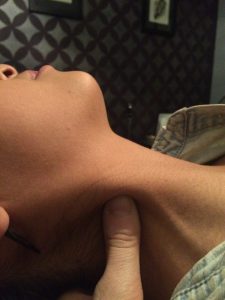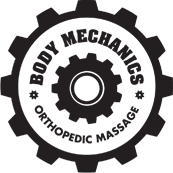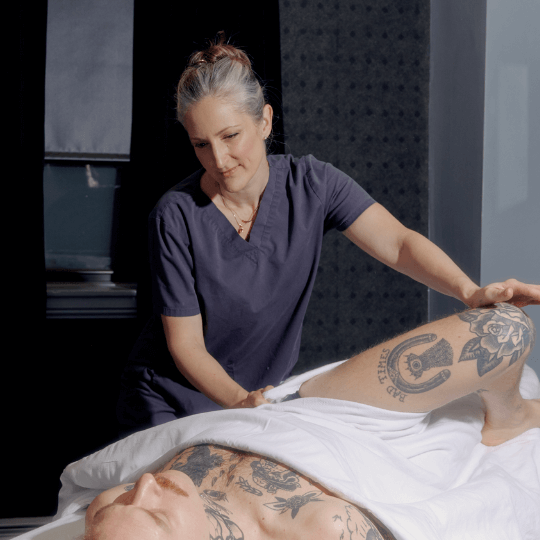 Massage Therapy and Pain
Massage Therapy and Pain
Working with Clients in the Pain Zone
This is a continuation of the last pain blog which offered some history on pain science and also some really general guidelines on massage therapy and pain.
If your client has no red flags in assessment and you have decided it is safe to touch, working with clients experiencing chronic pain not associated with an injury has its own challenges. For many people, pain has the distinct effect of stopping us from moving, regardless of its cause, and so getting your client back to a place where they feel that they can move can be considered a success. To work safely as a massage therapist with an understanding of this, you are going to want to switch from the treatment model where massage is passively received by a client into one where the client has full control of the experience, both physically and mentally.
First lets look at the physical aspects of a client having control
This can be challenging, especially considering that most massage therapy programs teach massage as a passive activity that is ‘done’ to the client. In this role the massage therapist acts more as a facilitator to touch. Consider that touch is not a one way experience and that every time you gently “rub” a muscle, you also have the ability to instead have that muscle and skin move gently under/against you. If someone is in pain, you have the option of saying “I am going to gently put my hand here on your back, why don’t you try breathing up into that feeling”, or “I will never press harder, why don’t you try pressing gently into me?”, or “I am going to hold your arm gently, why don’t you just tense the muscle a little and then relax or wiggle your fingers?”. There should be a direct relationship to the amount of pain present and the amount of control the client has. The more pain present, the more the patient should be in control of what is happening.
This does 3 things in my opinion:
1. Lowers the anxiety associated with treatment, and the anticipation of pain, and possibly dropping their pain level.
2. Facilitates change in the body by signaling normal function and behavior as the patient moves.
3.Protects you the therapist from stepping over a boundary. If the client has control, they only go as far as they want, and no further.
I want to be clear that if you are using this kind of treatment with someone who is in pain, you never want to cause pain. Their may be pain associated with the treatment, but it should not be from a new stimulus you are providing, such as pressure or forced movement. The pain associated with treatments of this nature should be caused by a patient moving through their own pain signal. What does that mean? It means that if someone has had long standing neck pain, and they are completely cleared for treatments, with no red flags, you should never aggressively treat with traditional deep massage. Instead I should gently guide the person to the edge of their painful experience and create a safe, controlled, comfortable setting in which they can explore going further-if they choose to do so. If the feeling of pain does not abate, you should, discontinue and refer out, but often reducing the anticipation of pain and giving the client control is the first step in the pain management in Massage Therapy.
How do you do it?
It all sounds pretty simple-give the client the control and they might get past their pain, but its actually a bit more complicated than that, because you don’t want to be randomly trying techniques. I divide my techniques up into graded categories to help me organize the treatments.
- Low pain– resisted eccentric/concentric contractions and dynamic stabilization, and holding the tissues muscle while the muscle moves beneath
- Medium pain– gentle active resisted techniques, holding the skin while the muscle moves underneath, simple isolated muscle movements
- Higher intensity pain– tense and relax exercises for muscles or groups of muscles, breathing exercises that activate accessory breathing muscles
You will notice the different categories of pain could also be explained as acute, sub acute, chronic, or you could use a pain scale to divide them up. The important thing is that you know where you with the person you are treating. I use LP, MP and HP for short hand charting proposes. Lets look again at that client with the neck pain so we can get a better idea of the application of these techniques for the different pain categories.
Lets look at some examples to make things clearer
Client with HP neck – This client is afraid to move and has pain on movement of any aspect of cervical spine or upper thoracic, with a history of whiplash. Does not go about normal activities.
Treatment– Is a gentle skin deep gliding massage. The goal is just to get used to the client getting used to touch. Once the client is relaxed we are going to begin graded breathing exercises to see if we can get them to reduce the bracing in the accessory breathing muscles. I isolate a muscle by gently touching it and say “can you make this expand and contract by moving air?” We go though each and every muscle that would be effected by breathing. Then we switch to tense relax and do the same. Isolate the muscle, or muscle group by gently touching it, ask the client to control it by tensing up and then relaxing. I finish by going back to very gentle surface treatment of gliding massage.
Client with MP neck -Client has some movement but feels very limited by their pain. Range of motion is reduced to about half, and some of the ranges are less quality than others. Goes about normal activities but has stopped participating in any sports or anything unnecessary to their day.
Treatment– General massage with light to medium pressure. Once the client is comfortable I begin holding isolated areas skin in areas of pain and asking the client to gently pull away from me. If the client experiences pain we go back to the above treatment. We reverse the technique and this time I isolate muscles and have the client push into me (essentially bowing the muscle) If the clients pain level keeps dropping we then move to full simple isolated muscle movements. I hold the muscle and they run though a full rang of motion. (Video example of type of activity)I often do this by saying “ok now try to squish my fingers with your neck”. I correct any movement where they are recruiting another unnecessary muscle to complete the movement or avoid moving through the whole range. At the end of the treatment we return to gentle massage.
Client with LP neck-This client has pretty much full range of motion, but experiences pain at the end range. In their words “I just feel I can’t get past the final stage of the injury”. They are going about their daily lives, and participating in sports with occasional flairs. (this is the client you should most often be treating and seeing unless you are an advanced practitioner)
Treatment– A general massage with light to medium pressure. You can use any of the above mentioned techniques to warm the tissues. As the treatment progresses, I move to holding the muscles firmly while they go through a range of motion. If no pain is present I ask the client to gently resist the movement for the selected muscle. (Video example of activity)If still no pain is present, I ask the client to resist with movement and move on to eccentric concentric moments. All of these activities are still gentle (the client need only meet you with enough force to activate the muscle)We end the treatment with the same general massage. If at any point the pain or the tone of the muscle rises, we go back to a previous treatment plan.
Wait!!!
But we have gotten ahead of ourselves…before you can do any of this cool stuff, you have to talk to your client about exactly what you will be doing with them and why you think it is the best choice!!!! And that’s exactly what we will go over next time.

